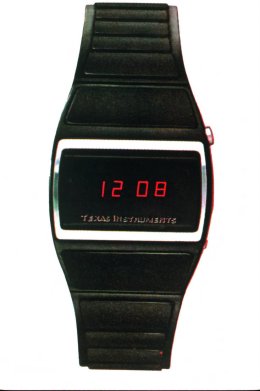Post by dsi1Post by Dogon StarsPost by ItsJoanNotJoAnnPost by Dogon StarsPost by BryanGSimmonsWho knew? https://www.bimbobakeriesusa.com/
I'd have thought that nothing could be more American than this,
https://www.walmart.com/ip/Brownberry-Natural-Wheat-Bread-24-oz/10449439
Chances are, most folks reading this have bought a Bimbo product in the
past month. Their HQ is in Mexico City. Bimbo.
https://www.bimbobakeriesusa.com/social-responsibility
At Bimbo Bakeries USA, we live Our Purpose every day – Nourishing a
Better World. Our actions work to nourish both people and nature – we
can only achieve better if we do both.
Bring better nutrition to millions by providing diverse nutrients
and simpler recipes
Support our associates and help our communities thrive
Become a zero-carbon champion
https://www.grupobimbo.com/en/sustainability/for-nature/regenerative-agriculture
We are supported by CIMMYT (International Maize and Wheat Improvement
Center) to encourage farmers to adopt regenerative agriculture practices.
In Jalisco, during the corn cycle of spring/summer 2021, more than
7,000 tons were collected on an area of 900 hectares where 41 farmers
participated.
For the 2021-2022 autumn/winter corn cycle in Sinaloa, there are
2,100 hectares and a volume of at least 20,000 tons is expected to be
produced under this regenerative practice.
In 2021, we started a sesame project in Sinaloa guaranteeing the
purchase for consumption by our company in Mexico.
As for the rotation of wheat crops, in 2021 we started in Sinaloa a
sesame project planted with the same practices, guaranteeing the
purchase for consumption of the company in Mexico.
(I think they just discovered that regular and widely practiced crop
rotation can be re branded as regenerative...)
I remember studying crop rotation in junior high school, but who'd
thunk it that farmers would adopt it?? 😉
Next they'll be telling us that crops yield more if planted during
spring and summer months and they've adopted planting and harvesting
during those months.
Oh come on now, that's cheating to revel all the things they can credit
to diversity programming.
Otoh if they can ever figure out how to make drip emitters that don't
clog, well then...
When I was a student at the University of Hawaii, I worked for the
Department of Soils and Agronomy. Drip irrigation was kind of a thing
back then. I can't say what the current state of that method is.
It's dripping along on some orchards and soon, but clogging, that damned
clogging, sigh...
https://edis.ifas.ufl.edu/publication/HS388
2.6 FILTRATION SYSTEM
Because drip-irrigation water must pass through the emitters, the size
of the particles in the water must be smaller than the size of the
emitter to prevent clogging. Nearly all manufacturers of drip-irrigation
equipment recommend that filters be used. The manufacturer generally
will not honor warranties unless filters are used.
The filtration system removes "large" solid particles in suspension in
the water. Different types of filters are used based on the type of
particles in the water. Media filters (often containing angular sand)
are used with surface water when large amounts of organic matter (live
or dead) need to be filtered out. Screen filters or disk filters may be
used with groundwater (Figure 6). A 200-mesh screen or equivalent is
considered adequate for drip irrigation. When the water contains sand, a
sand separator should be used.
Figure 6. Disk filters are made of stacked disks with small openings.
They are usually color coded to indicate the filtration mesh.
Figure 6. Disk filters are made of stacked disks with small openings.
They are usually color coded to indicate the filtration mesh.
Credit: Eric Simonne.
Rapid clogging may occur when no filter or the incorrect type of filter
is used. A filter needs to be cleaned when the difference in pressure
across the filter (measured before and after the filter) is greater than
5–8 psi. A drip-irrigation system should never be operated without a
filter even if the filter requires frequent cleaning. Failure to use a
filter will result in clogged drip-tape emitters, often resulting in
poor uniformity and sometimes in crop loss. The filter should be cleaned
as often as needed. Efforts should be made to understand the cause of
the rapid clogging, and remediation for the problem should be developed.
The presence of the filter after the point of fertilizer injection means
totally soluble fertilizers must be used. Otherwise fertilizer particles
may contribute to filter clogging. Conventional growers may use two
types of fertilizer materials: ready-to-use true solutions or dissolved
granular fertilizer. Ready-to-use solutions are easily injected.
However, granular fertilizers are sometimes coated with a thin layer of
oil to prevent dusting. Upon dissolution of the fertilizer granules, an
oily film may form at the surface of the solution. Injecting the oily
film together with the fertilizer may contribute to filter and emitter
clogging. Certified organic fertilizers are seldom true solutions (they
may be suspensions or dilute colloidal solutions), and may also
contribute to filter clogging. Consequently, the actual fertilizer rate
applied may be reduced by the amount of fertilizer particles trapped by
the filter. In both cases, small-scale trials may be needed to assess
the clogging risk of each fertilizer material used.
Post by dsi1I remember when the department got a programmable desktop calculator. We
gathered around to see this awesome new research tool. It was about the
size of a VCR and just beautiful. It had a bunch of buttons. My guess is
that it was obsolete a short time later.
I had one of these once upon a time:
Loading Image...
Somewhere it feels like it still may be flashing away.